|
DANL as low as -161 dBm with optional preamp |
|
View lower powered signals (harmonics, interference sources) and ease trouble-shooting in swept and real-time mode. |
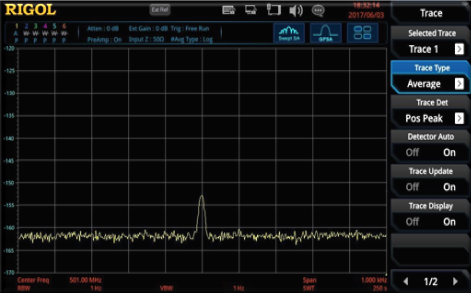
|
|
Using the optional PreAmplifier the RSA3000 enables engineers to accurately view signals down to a noise floor of -161 dBm. In addition to locating and isolating lower power signals across the spectrum, this makes it possible to more precisely characterize all of the critical RF components within the transceiver design including attenuators, filters, mixers, and antennas. |
|
1 Hz optional Minimum Resolution Bandwidth (RBW) |
|
Provides high resolution to separate signals with close frequencies enabling easier signal identification for characterization and advanced measurements. |
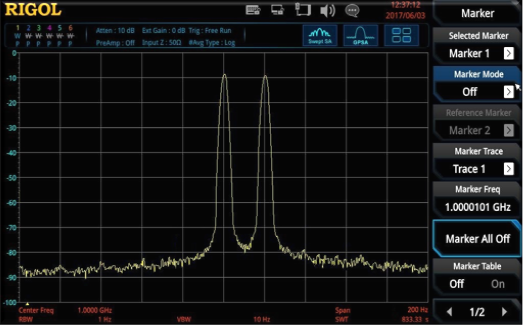
|
|
Analyzing signals that are close together in frequency is critical to validation of many RF devices and systems. With the RSA3000, sweep a signal bandwidth with a RBW setting of just 10 Hz or add the RSA3000-BW1 option and set it to 1 Hz RBW to view additional detail on close signals. |
|
1 ms full span sweep |
|
Utilize the fast 1 millisecond full span sweep to quickly identify signals of interest. |
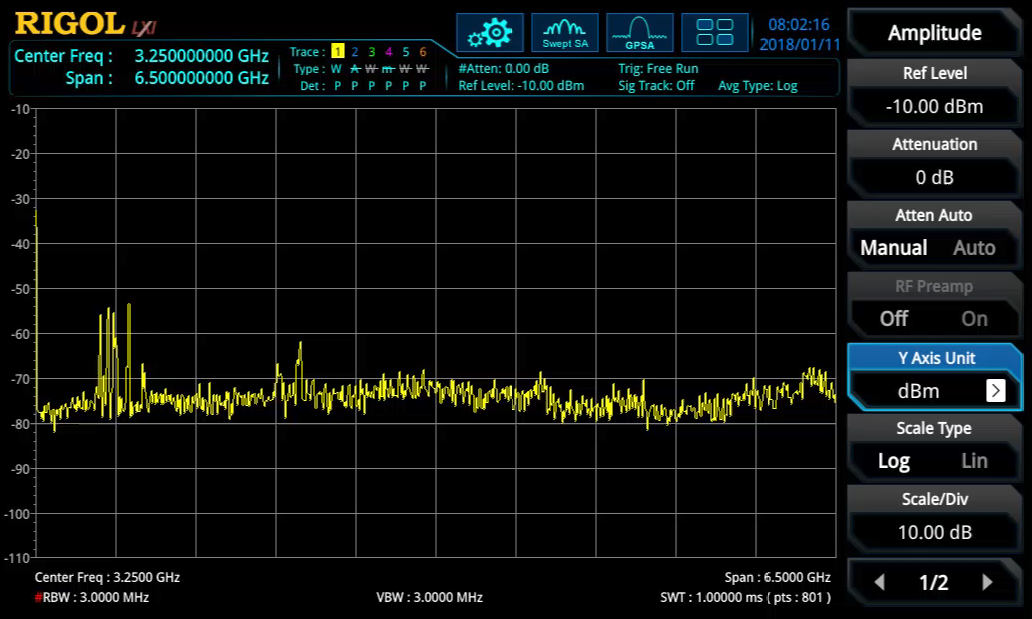
|
|
Quickly evaluating a broad spectrum for signals of interest and possible signs of interference or unwanted transmissions can be time consuming as many of these signals are moving to shorter and shorter durations. The RSA3000 makes a full span sweep in just 1 ms making it possible to capture many of these signals on the first pass and quickly get a more comprehensive understanding of the local transmissions before moving to real-time for additional analysis. |
|
Up to 40 MHz of Real-Time BW |
|
View wider band and hopping signals at one time without additional setup making identifying and analyzing signals of interest faster and easier. |

|
|
Engineers debugging time is a critical resource in any new design process. RF debugging is already a complicated challenge. Expanding the Real-Time bandwidth of the RSA3000 Series Analyzer to 25 or 40 MHz with the RSA3000-B25 or RSA3000-B40 options to make it faster and easier to capture, isolate, and debug wider bandwidth signals with a single setup. |
|
7.45 µs 100% POI |
|
Capture pulsed transmissions as short as 7.45 µs with guaranteed capture and power accuracy. |
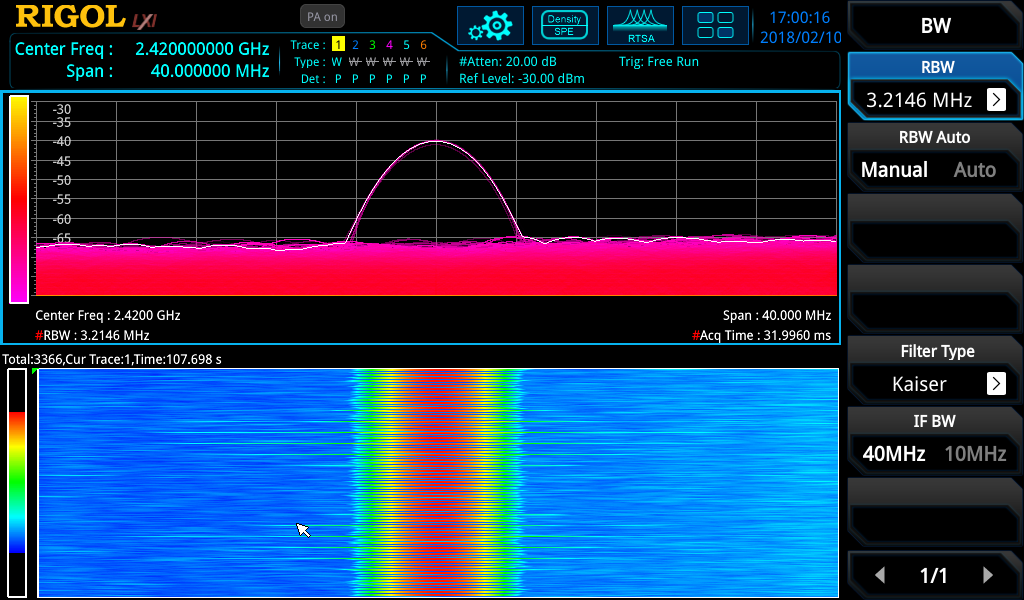
|
|
Probability of Intercept is an important specification for any serious Real-Time Spectrum Analyzer. It is the only way to know if your power measurements are accurate given a signal’s on time. Many Real-Time analyzers leave this value unspecified or make it dependent on the PC, but the RSA3000’s platform makes it possible to specify a 100% POI as low as 7.45 µs with the 40 MHz RTBW option enabled and to specify how that changes based on real-time span and RBW settings. Use these specifications to confidently capture and make power measurements of short duration transmissions. |
|
7 Real-Time Visualization Modes |
|
Advanced debugging and analysis with combinations of Normal, Density, Spectrogram, and Power vs Time visualizations. |
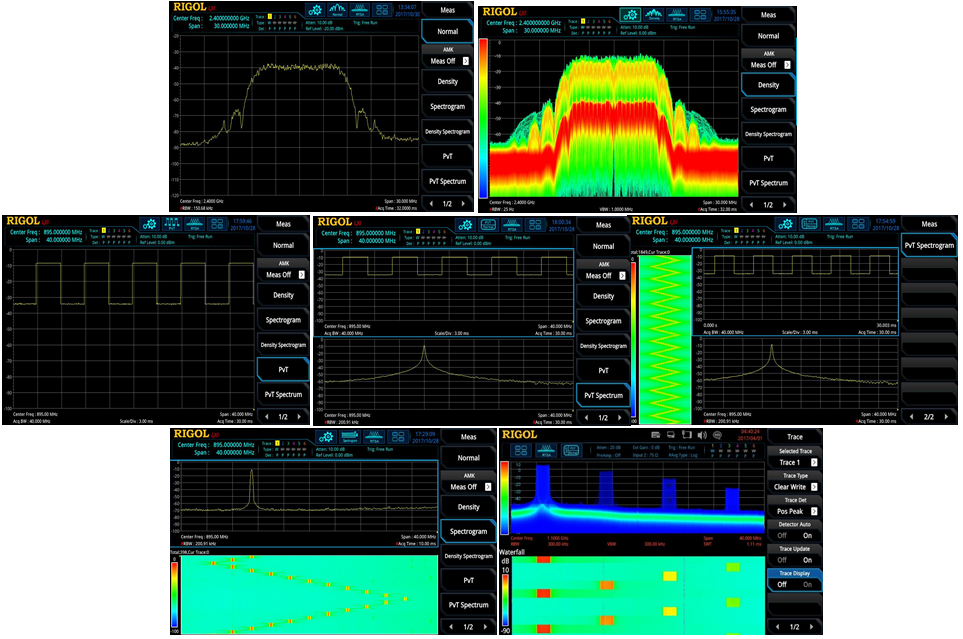
|
|
The 7 visualization modes of real-time signals using the RSA3000 make it easier to capture, isolate, and analyze RF signals and systems. Power versus Time and Spectrogram views show how the signal changes over time either within a capture or between consecutive captures. Normal and Density show power across the frequency span with either different trace and detector options or with probability of occurrence data. Combining these views and utilizing markers and triggers in different modes makes the RSA3000 a flexible instrument for real-time RF analysis and debugging. |
|
Powerful triggering capabilities |
|
Identify specific signals of interest with frequency mask, power triggers, or use external triggers to time correlate digital signals for additional analysis. |
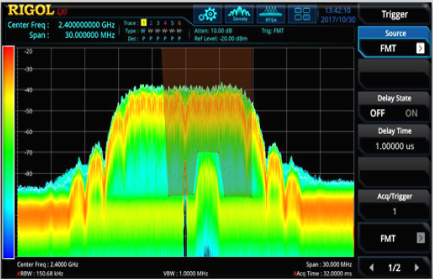
|
|
Triggering flexibility is important to real-time debugging of RF signals. Time correlate events with embedded activity to test latencies and power draw effects or find root cause of unwanted transmissions or bugs. The RSA3000 combines powerful frequency mask and power triggers with trigger in and out signaling as well as an IF output that reproduces the real-time bandwidth on a 430 MHz carrier. All of these capabilities enable further time domain analysis of the spectrum with additional instruments already on the engineer’s bench. |
|
Tracking Generator and VSWR measurements |
|
Use the optional tracking generator to test cables, antennas, filters, and active components. VSWR automates standing wave parameter measurements. |
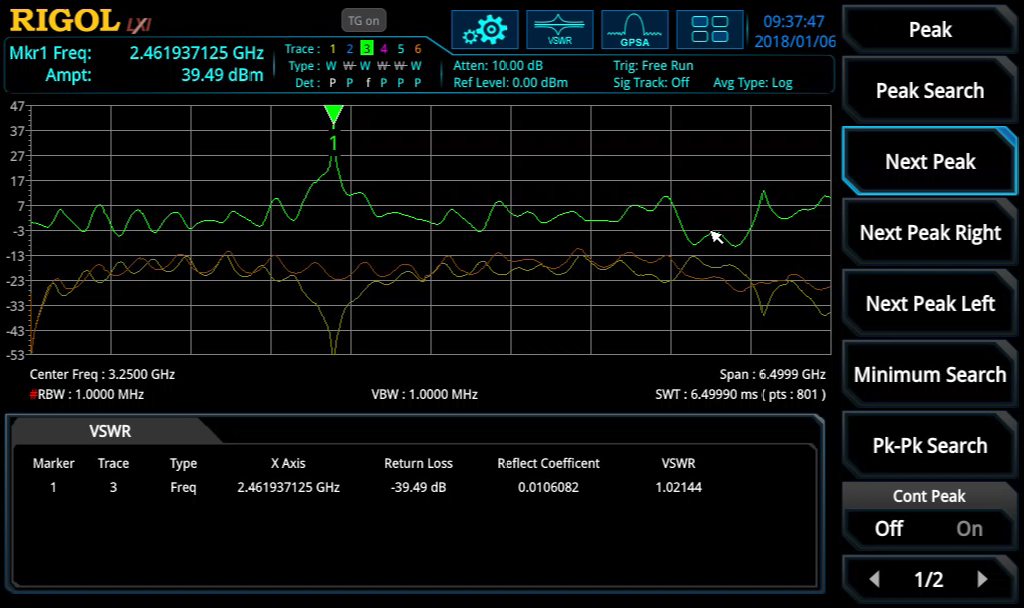
|
|
The RSA3000-TG models come with the factory installed tracking generator and automated VSWR measurements included. The tracking generator provides 40 dB of dynamic range settable from -40 dBm to 0 dBm and can scan from 100 kHz to the maximum frequency of the instrument. Use this flexibility to verify devices under a variety of test conditions. VSWR measurements require a direction couple or bridge. We suggest adding the VB1040 or VB1080 accessories for VSWR measurements. |
|
Flexible usability options |
|
Use front panel buttons, touch screen, keyboard/mouse/monitor, and PC based software control in any combination to match the application and customer preference. |
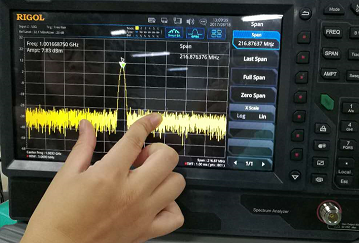
|
|
The RSA3000 makes it possible to control the instrument completely with a mouse, keyboard, and external HDMI monitor ideal for a bench at your desk. Engineers can also use the traditional knobs and controls. Those who prefer can interact with the touch screen directly. The flexibility to utilize and combine these capabilities makes it intuitive to operate the new instrument efficiently. |
|
EMI filters and detectors |
|
RSA3000-EMC option includes 6 dB filters for EMI bandwidths as well as Quasi Peak detectors. |
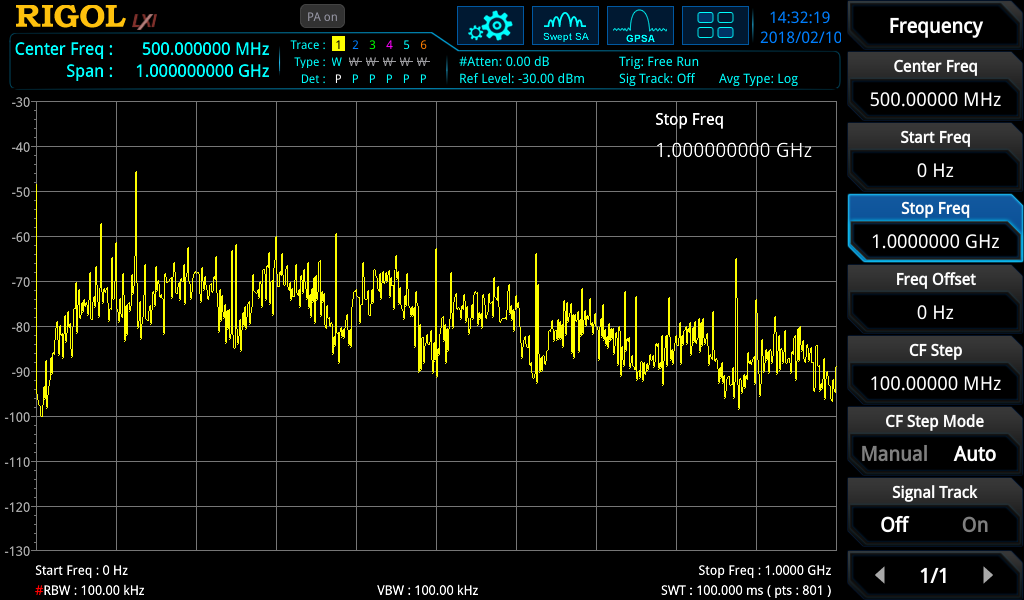
|
|
EMI PreCompliance testing and debugging is an important stage in any electronics design project. Use the EMI filters, bandwidths, and detectors to analyze frequencies of concern before sending the device out for testing. If emission levels are too high, easily switch to real time mode to further characterize the signal and determine root cause. Add S1210 EMI PreCompliance software for complete PC based EMI testing and add the near field probe set accessory (NFP-3) for debugging. |








